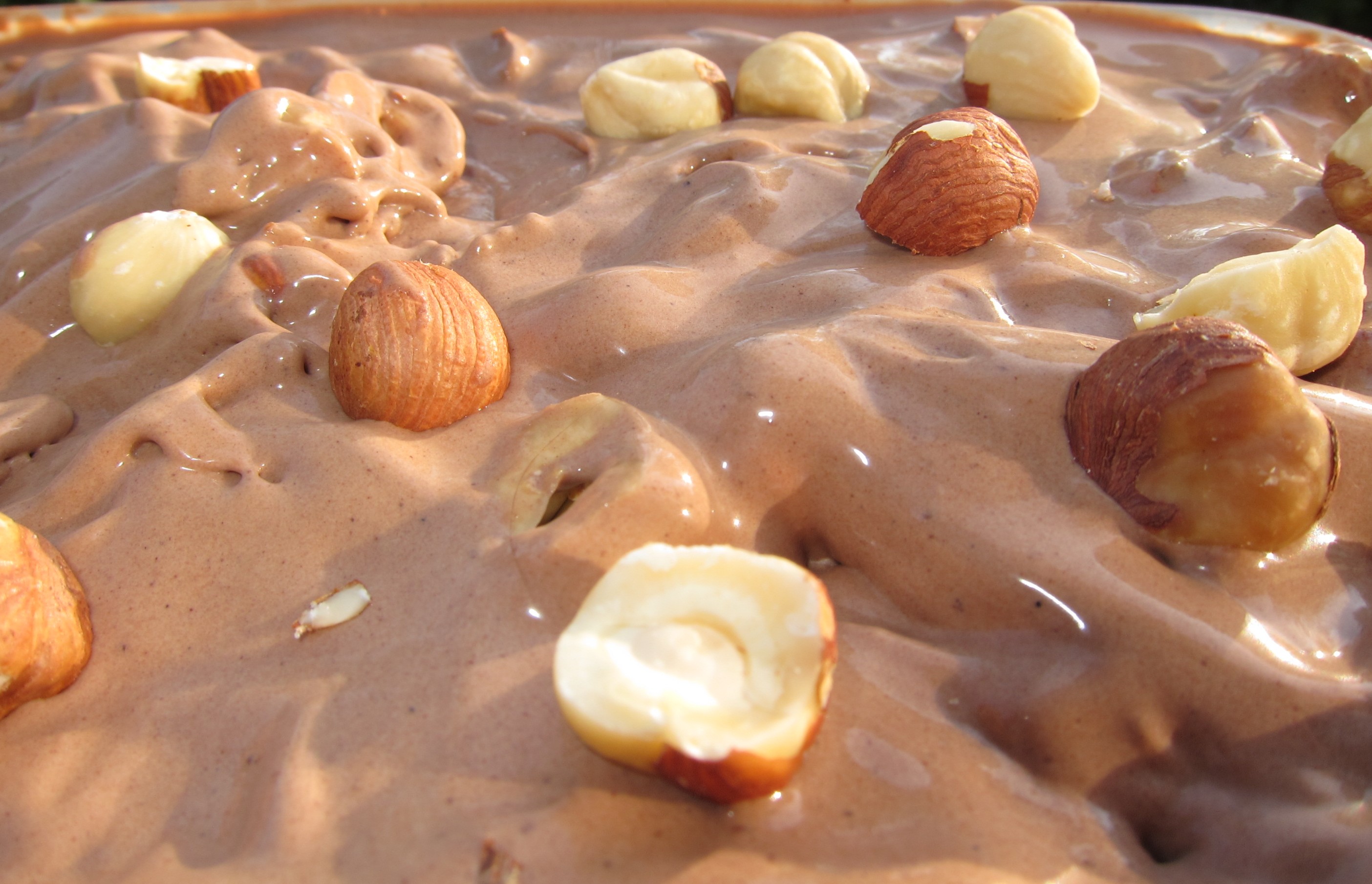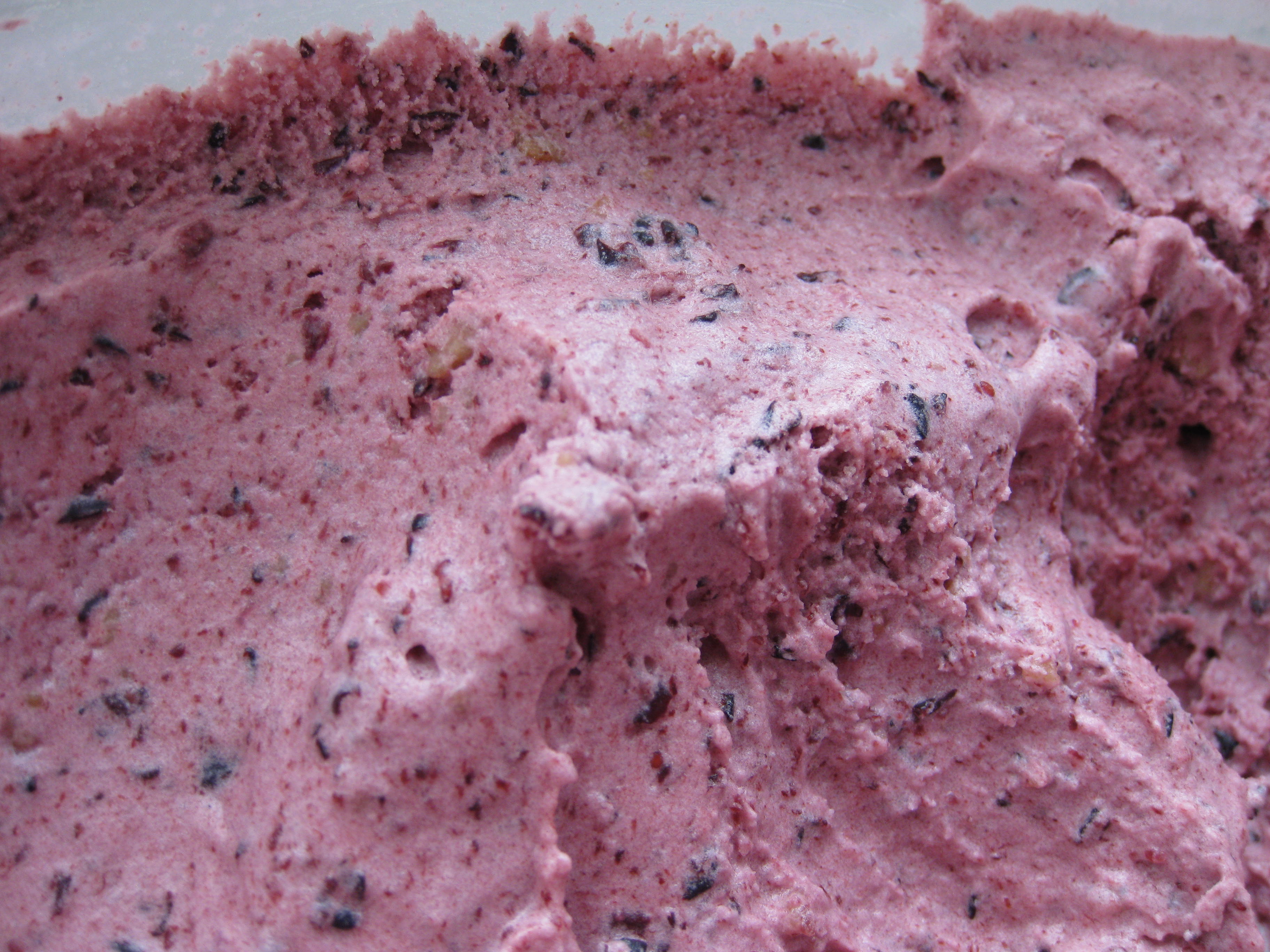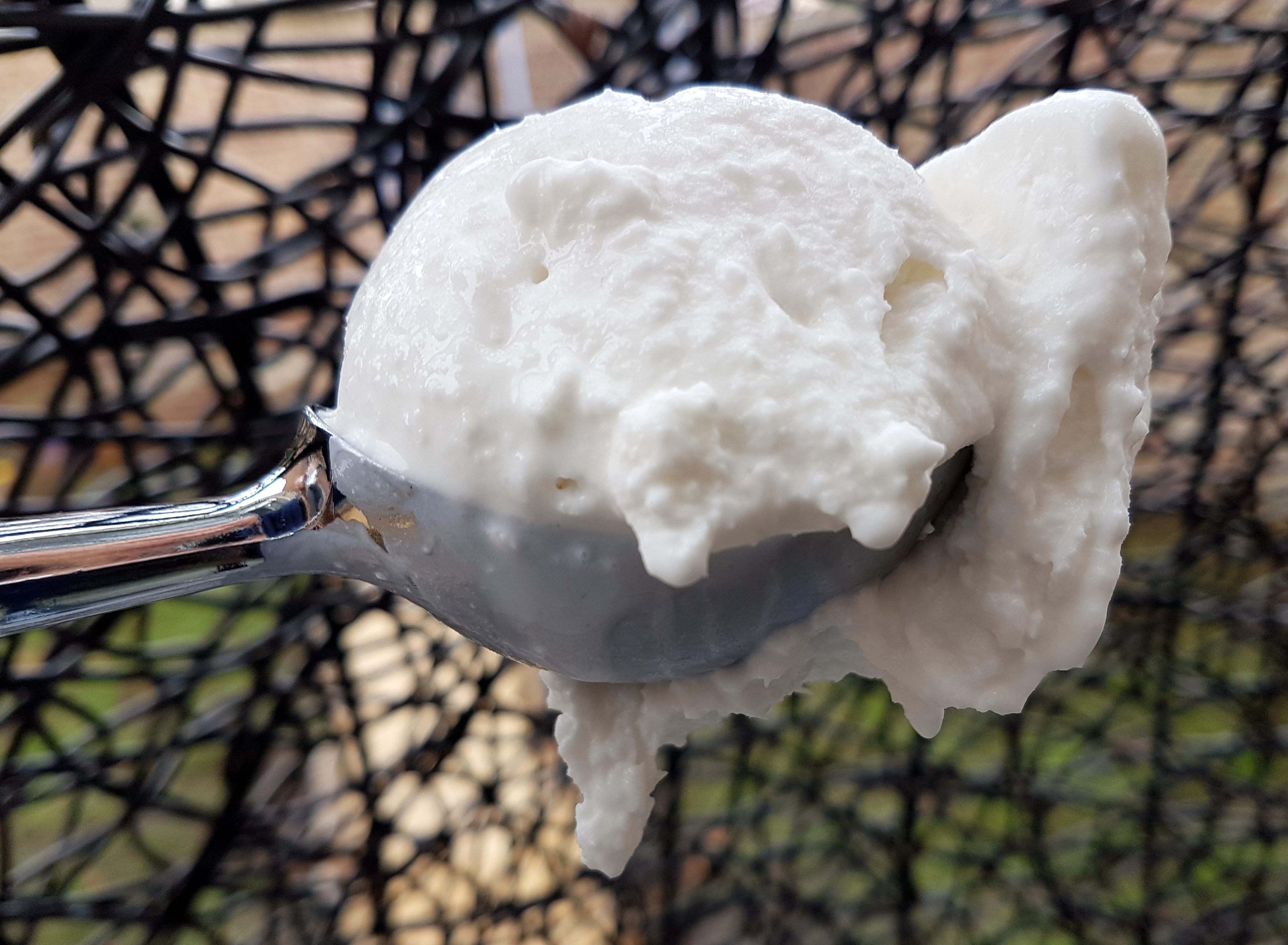Ginger shot sorbet
Ginger shots have become all the rage – spicy, strong and allegedly even good for you! Some fear the strength, others consider it on par with alcohol – only so much healthier. Read on as we transform this spicy elixir into sorbet!
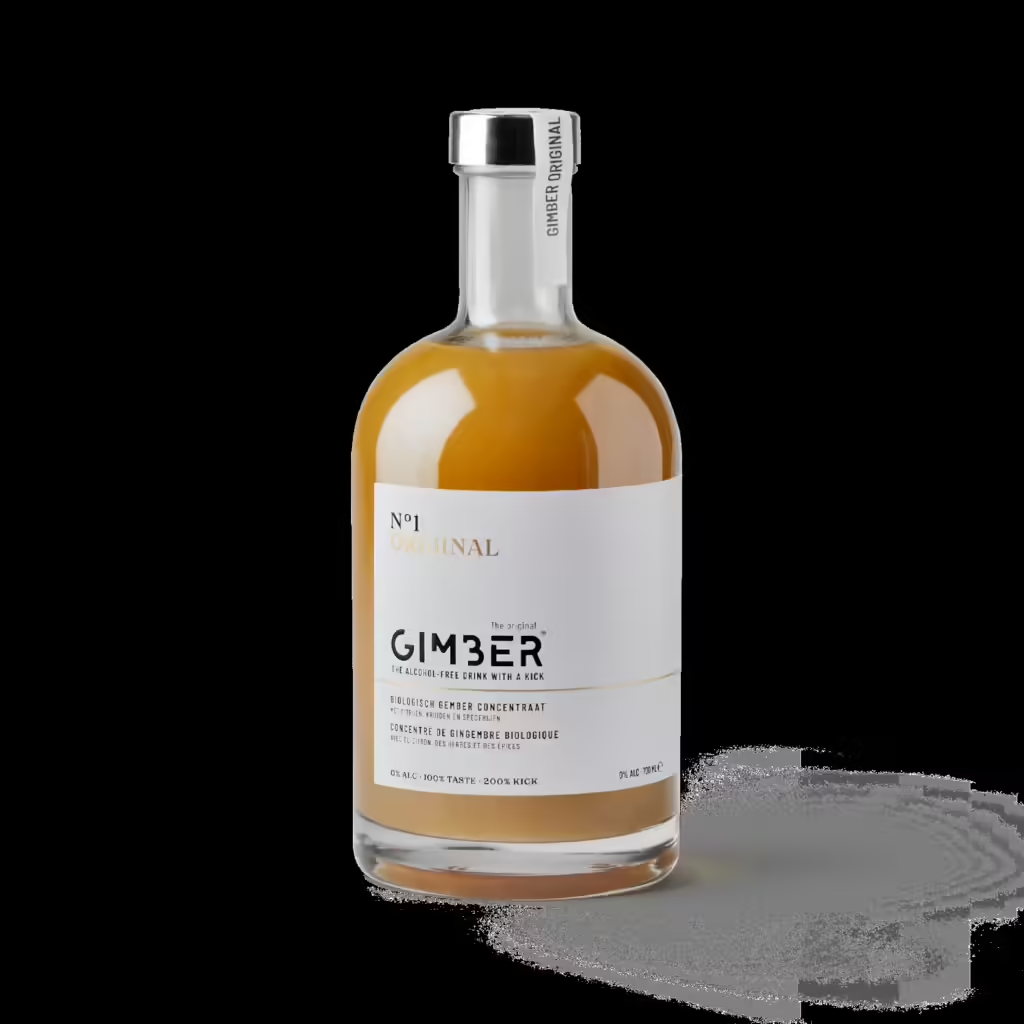
There are many commercial ginger shots out there – this is just one example. The ads promise “100% flavor, 200% kick and 0% alcohol”.
Ginger – going for the roots
Ginger (Zingiber officinale) is actually a flowering plant, and the part we eat is its rootstalksroot (or rhizome = a subterranean plant stem that sends out roots and shoots from its nodes). Ginger belongs to the same family as the spices cardamon, turmeric and galangal.
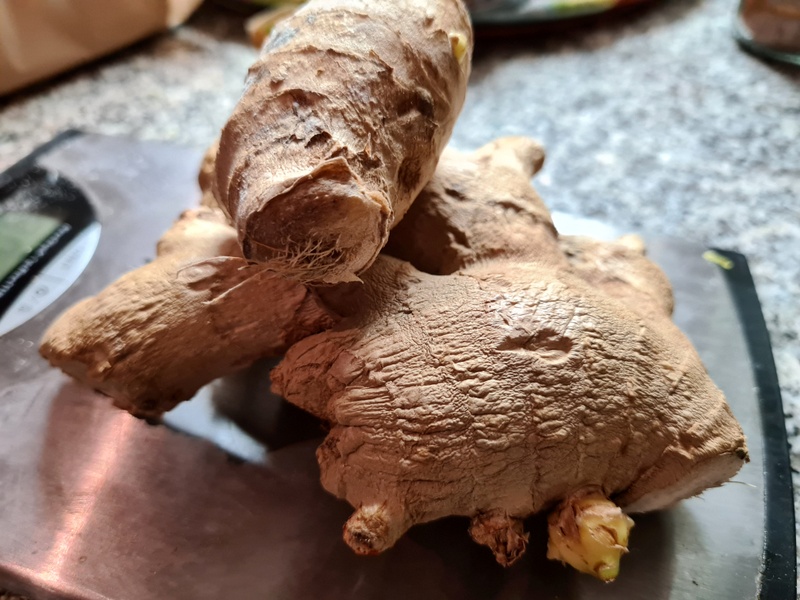
Originating in Asia, ginger spread to the pacific islands, and to Europe along the ancient trade routes. Both the (ancient) Greeks and the Romans cherished it for its culinary and supposed medical qualities. By then, ginger already had a well-established place in the folk medicine of China, Japan and India, including as a remedy against nausea, indigestion and respiratory ailments. The science is still out there on most of these claims, but it does seem to be some support for ginger having an anti-inflammatory effect. And since many people are convinced that ginger has beneficial effects, we shouldn’t discount the likely considerable positive placebo effects 🙂

Mythical trio – all with their own connection to the fascinating ginger!
Ginger also appears in a number of mythological contexts: In ancient Greece, ginger flowers grew from the spots where the goddess Demeter’s tears over the abduction of her daughter Persephone had fallen. In China, the renowned trickster the Monkey King was associated with ginger. In India, the goddess Lakshmi threw a piece of ginger into the ocean and thereby created the first ginger plant.
A shape that inspires the imagination, in combination with both culinary appealing and purported medical positive effects, has cemented the fragrant ginger’s popularity over the centuries. And it is a very versatile ingredient: you can pickle it, use it for drinks (herbal tea, ginger beer, ginger wine, ginger ale …), make candy of it, or simply add it to dishes as a spice.
One of the latest inventions are arguably the ginger shots. While ginger elixirs admittedly have been around for thousands of years, the highly concentrated ginger shots of today are typically marketed and served in small quantities, meant to be downed in one or two swigs. Some people love them, while others find them too strong to enjoy. Ironically, the powerful punch they pack has also made the ginger shot a rather popular non-alcoholic alternative to hard liquor! Some are based solely on ginger, but many are mixed with lemon juice and/or other fruit juices, often also sweetened in some way or another.
When making sorbet, you can of course use any commercially available ginger shot mix, but it is also very easy (and much cheaper) to make it yourself!
Easy and quick steps to home-made ginger shots
I will share my favourite recipe below. No heating is required, but you’ll need a blender or a food processor to turn the ginger into paste:-) . The recipe is easily adaptable for strenght and/or taste – just rebalance the proportions of ginger/water and apple juice to your very own liking!
- about 500 ml water + about 250-300 gram ginger root (1-2 moderately big knobs: the more you use, the stronger the punch)
- 400 ml apple juice
- Juice of 1-2 lemon
- 1 tablespoon of honey
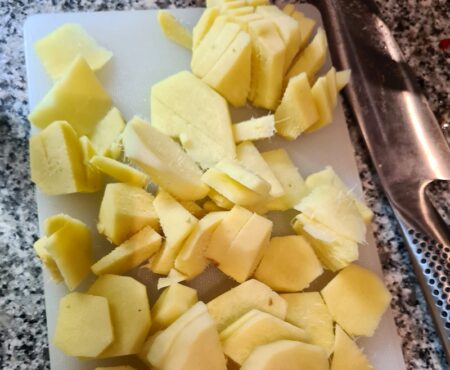
The chopped-up ginger: the more you add, the stronger the final result.
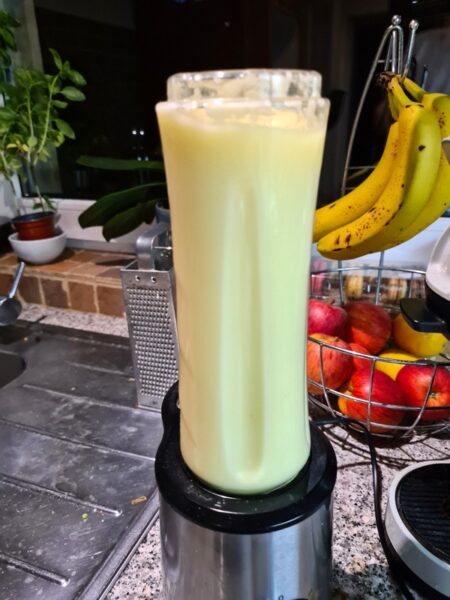
With a good mixer, you’ll turn the ginger into ginger water in no time!
Peel the ginger and cut it in slices.
Run the slices in a mixer together with the water.
Sieve the ginger-mix, making sure to press the paste, and check how much liquid you finally get: now add an equal amount of apple juice, plus the honey and the lemon juice. Mix well!
Store in a well-cleaned bottle, and keep your ginger shots in the fridge.
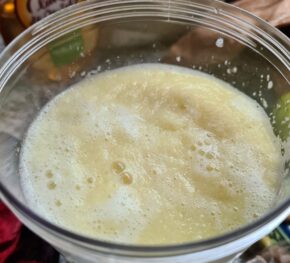
Once out of the mixer, be sure to sieve off the fibre from the ginger water. Press all liquid out of the resulting paste too, and save it.
Making the sorbet
For the sorbet, we’ll simply use the ginger shot we made (or bought in the store) plus an amount of extra sugar to get to the desired sorbet-state.
The sugar we’ll add is not primarly there to make the sorbet sweeter (although it will) – the added sugar is mainly there for structural reasons, in order to hold the sorbet together as a … well, sorbet 🙂 .
If you skimp on the sugar, the sorbet will simply turn out to be unpleasantly icy and not very sorbet-like at all. As most non-sugar alternatives lack the “structural power” of sugar, these will usually not do either (Xylithol and apparently also Allulose should do, however). All this goes for all sorbets but particularly those that mainly are “flavoured water” (= no solids, in ice cream-making terms). Unless you are prepared to add other stabilising stuff to your mix, sugar really is the only thing that will keep those pesky large ice crystals from forming.
Note that you can supplement some of the extra sugar to be added with some corn- or glucose syrup: those will also sweeten things up in the “good way” but will also improve the general consistency better than ordinary white sugar.
This means that you, dear reader, will have to come up with the right amount of sugar: how much will ultimately depend on the proportions of your specific blend of ginger shot (notably how sweet apple juice you’ll be using, and how much). This will, however, be a breeze with the old tried-and-tested Egg Test. So get your sugar ready – while there are more sophisticated instruments, a simple egg will do just fine!
The Egg Test has been described in details in other posts (check the link above, for example) but to quickly recap: Take a clean and (uncooked) fresh egg, drop it in your sorbet base and check much of the egg is showing up above the surface once it has resurfaced. If the egg remains submerged, or if less than about a scant 2 1/2 cm (about the size of a US quarter) is showing above the surface, add more sugar. Likewise, if more than 2 1/2 cm is showing up, add more juice, fruit puree or water to the mixture.
When the egg achieves the “ideal” 2 1/2 cm elevation, your base has reached the sugary sweet spot for sorbets!
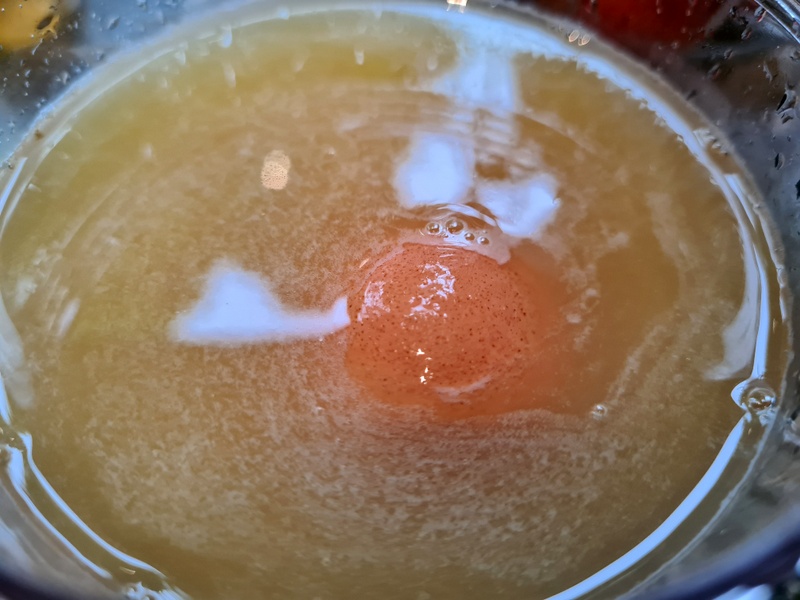
Can you spot the (fresh and clean) egg? When making sorbets, the Egg Test is a very handy help to get the amount of sugar right.
Now, simply churn your sorbet base in your ice cream machine, or still-freeze using your household freezer.
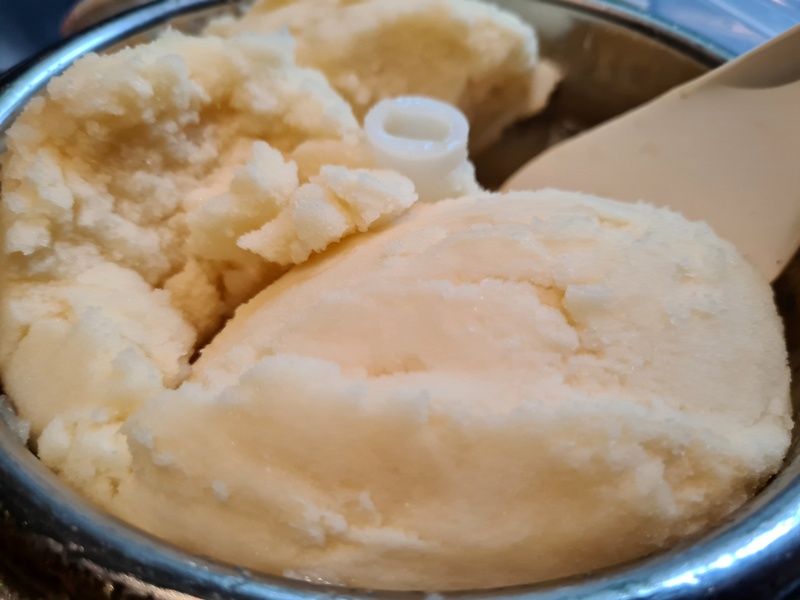
The result: Tasty sorbet that packs a spicy punch
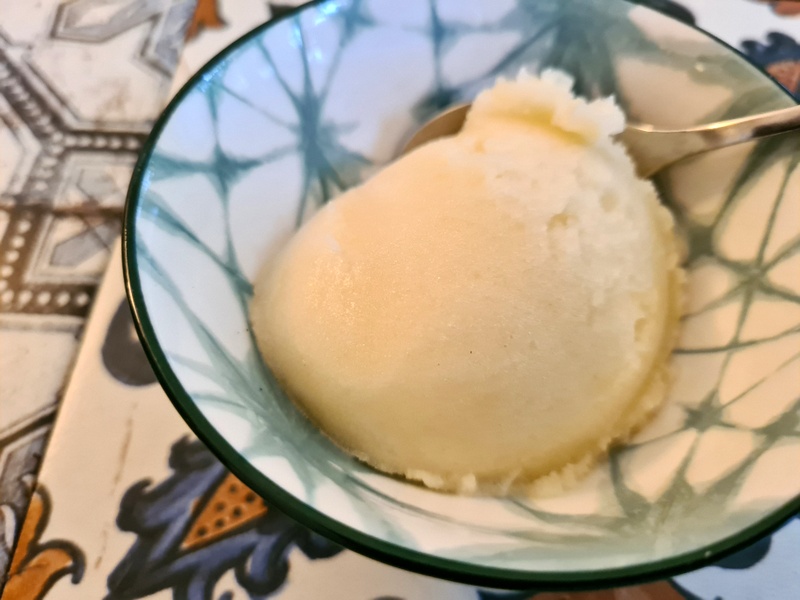
Ginger shot sorbet
The ginger shot sorbet is – as it should be – a refreshing and spicy-strong treat, perfect for all us ginger-lovers! Just like with the liquid shots, you may wish to enjoy it in small doses. That said, the coldness and the added sugar do have a dampening impact, so don’t be discouraged. After all – this might be one of those sorbets that actually is good for you 😉
- About 700 ml (about 3 cups) ginger shot-mix (store-bought or home-made)
- Added sugar, enough to satisfy the Egg test
- Optional: substitute some of the extra sugar with corn- or glucose syrup.
- about 500 ml (about 2 cups) water
- about 250-300 gram ginger root (1-2 moderately big knobs: the more you use, the stronger the punch)
- 400 ml (about 1.7 cup) apple juice
- Juice of 1-2 lemon
- 1 tablespoon of honey
- Take your ginger shot mix, add sugar enough to satisfy the so-called Egg test (see the post) and your base is ready!
- Churn the base in your ice cream machine or still-freeze in your household freezer.
- Peel the ginger and cut it in slices.
- Run the slices in a mixer together with the water.
- Sieve the ginger-mix, making sure to press the paste, and check how much liquid you finally get: now add an equal amount of apple juice, plus the honey and the lemon juice. Mix well!
- Store in a well-cleaned bottle, and keep your ginger shots in the fridge.
When the “ideal” 2½ cm elevation is achieved, your base has reached the ideal sugary sweet spot for sorbets!
